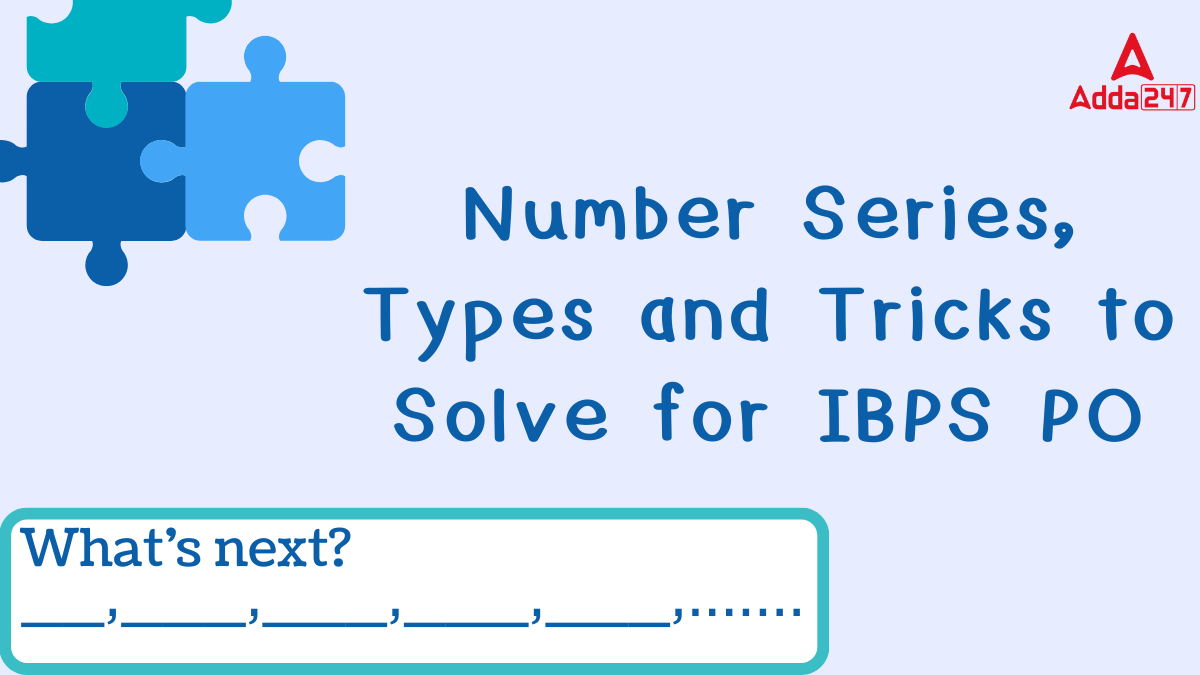Number series questions are a staple in the quantitative aptitude section of the IBPS PO exam. They test candidates’ ability to recognize patterns and apply logical reasoning quickly. Mastering number series problems not only boosts their overall score but also sharpens their mental math and analytical skills. In this column, we’ll explore the types of number series commonly asked in IBPS PO exams, effective tricks and shortcuts to solve them, and a smart approach to tackling these problems under time pressure.
Number Series for IBPS PO 2025
A number series is a sequence of numbers arranged in a specific pattern. The task is to identify the pattern and predict the next number, or find the missing term. These series can be simple or complex and often involve arithmetic operations, geometric progressions or a mix of different mathematical rules. With consistent effort, aspirants can crack number series problems confidently and boost their overall exam performance in IBPS PO 2025.
Types of Number Series in IBPS PO
1. Arithmetic Series: Here, the difference between consecutive terms is constant. For example: 2, 5, 8, 11, 14… (difference of 3).
2. Geometric Series: Each term is obtained by multiplying the previous term by a fixed number called the common ratio. For example: 3, 6, 12, 24, 48… (multiplied by 2).
3. Mixed Series: These combine arithmetic and geometric progressions or alternate between different operations. For example: 2, 4, 8, 11, 22, 25…
4. Square and Cube Series: Terms are perfect squares or cubes, or follow a pattern involving squares and cubes. Example: 1, 4, 9, 16, 25… (squares of natural numbers).
5. Alternate Series: Two different series alternate in the same sequence. For example: 2, 5, 4, 7, 6, 9… (first series: 2,4,6…; second series: 5,7,9…).
6. Complex Series: Most of the time, questions are asked by combining the above types of Number series. For example: 156, 182, 210, 240, … (next term will be 272; (13²-13), (14²-14), (15²-15)…
7. Miscellaneous Series: These may involve factorials, prime numbers, the Fibonacci sequence, or other less straightforward patterns.
Tricks and Shortcuts to Solve Number Series
Understanding the common types of series and applying simple tricks like checking differences, looking at alternate terms, and recognizing special number patterns can save you precious time during the IBPS PO exam.
1. Look for Simple Differences or Ratios: Start by checking if the difference between terms is constant (arithmetic) or if the ratio is constant (geometric). This is the quickest way to spot the pattern.
2. Check Differences of Differences: If the first differences are not constant, find the second differences (differences of the differences). A constant second difference indicates a quadratic pattern.
3. Observe Alternate Terms: If the pattern isn’t obvious, separate the series into two alternating sequences and analyze them individually.
4. Identify Common Mathematical Patterns: Look for squares, cubes, factorials, prime numbers, or Fibonacci sequences. Sometimes the series involves adding or subtracting these special numbers.
5. Use Digit Patterns: In some series, the pattern is in the digits themselves rather than the whole number. For example, alternating increments in the tens and units place.
6. Apply Reverse Engineering: When stuck, try working backward from the given terms or the options to see if any fit the pattern.
7. Memorise Common Series: Familiarity with common series like squares, cubes, factorials, and prime numbers saves valuable time.
8. Use Approximation and Elimination: If the exact pattern is complex, use approximate calculations and eliminate clearly wrong options quickly.
How to Approach Number Series Problems in IBPS PO Exam
Number series questions can seem tricky at first glance, but with the right approach and practice, they become manageable.
- Read the Series Carefully: Don’t rush. Observe all terms and note down the differences or ratios.
- Start with Basic Checks: Test for simple arithmetic and geometric progressions first. These are the most common.
- Write Down Differences: Jot down first and second differences to identify linear or quadratic patterns.
- Check Alternate Terms: If needed, separate the series into two sequences and analyze each.
- Look for Special Number Patterns: Consider squares, cubes, factorials, or prime numbers if the usual checks don’t reveal the pattern.
- Use Options for Guidance: If options are given, plug them in to see which fits best, especially when the pattern is complicated.
- Practice Mental Math Tricks: Being quick with addition, subtraction, multiplication, and division helps cut down solving time.
- Manage Your Time: Don’t spend too long on one question. If it seems too tough, move on and come back if time permits.




 Number Series Questions for Bank Exams
Number Series Questions for Bank Exams
 Most Important Approximation Questions f...
Most Important Approximation Questions f...
 Quadratic Equation Questions for SBI PO ...
Quadratic Equation Questions for SBI PO ...








